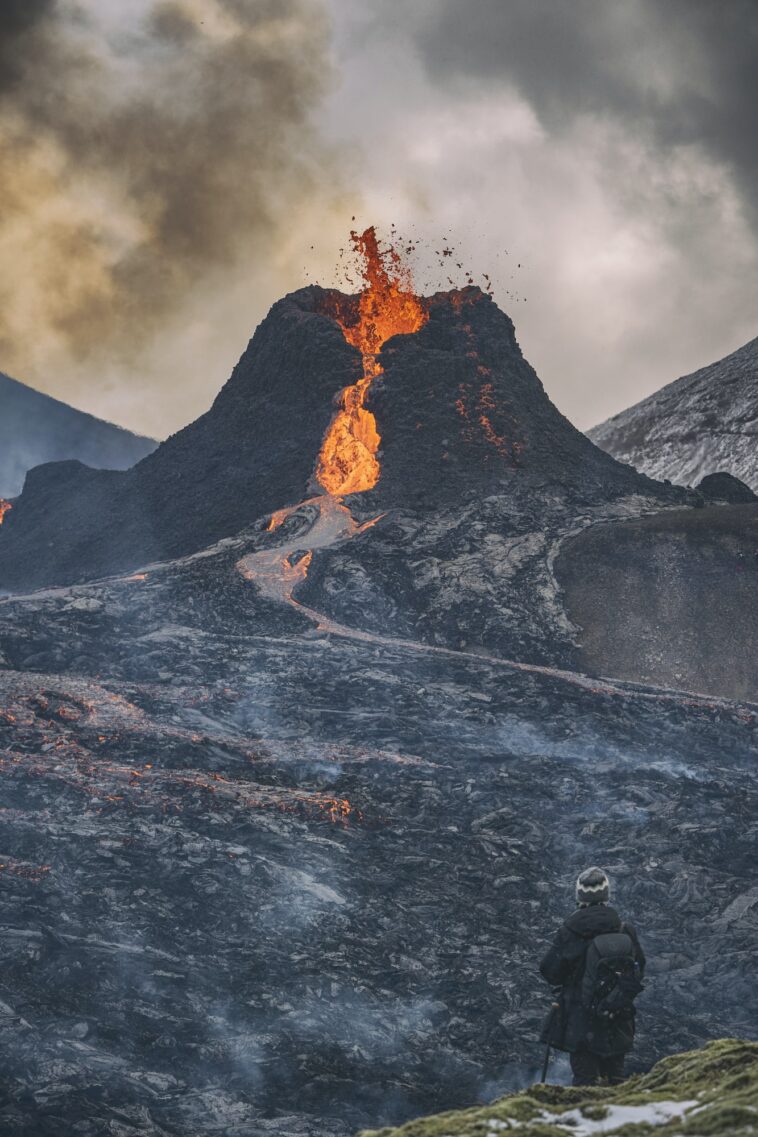Volcanoes are not merely openings in the Earth’s crust but intricate natural systems that have a significant impact on our planet’s landscapes, ecosystems, and even climates. They are compelling features of our world that evoke both admiration and fear, often dwelling within the backdrop of humanity’s most vibrant civilizations.
The Enigmatic Mount Bromo of Indonesia
Mount Bromo, nestled in the lush landscapes of Indonesia, stands as a prime example of the complex beauty of volcanoes. Captured in a photograph by Ibrahim Kusuma, available on Unsplash, Mount Bromo is not just an awe-inspiring spectacle; it’s a gateway to understanding the immense geological forces at play beneath our feet.
The Geological Backbone: Tectonic Plates
The surface of our planet is a dynamic jigsaw puzzle of tectonic plates. The movements of these massive slabs of Earth’s lithosphere create the perfect breeding ground for volcanic activity, particularly along their diverging and converging boundaries. Mid-ocean ridges, like the Mid-Atlantic Ridge, and continental collision zones, like the Pacific Ring of Fire, are prime examples of such activities.
The Birth and Growth of Volcanoes
A volcano comes into being through a process as old as the Earth itself. It starts with magma rising through the crust, followed by eruptions that deposit lava, ash, and rock. Over time, these materials accumulate, giving rise to the majestic volcanic mountains that dot our landscapes.
Diverse Forms of Volcanoes
From the gently sloping shield volcanoes born of flowing lava to the dramatic stratovolcanoes with their explosive history, each volcano tells a unique story. The cinder cones, the smallest of the lot, remind us of the Earth’s more subtle artistic touches, whereas the large composite volcanoes illustrate its power to construct and destroy over eons.
The Life Cycle of a Volcano
The life of a volcano is a narrative of dormancy, activity, and sometimes, finality. An extinct volcano stands as a monument to its once fiery past, while an active volcano serves as a constant reminder of the Earth’s internal vigor and the perpetual cycle of creation and destruction.
Volcanoes: Earth’s Architects
Volcanoes are not just destroyers but creators. They forge new lands, create rich soils, and release gases crucial for our atmosphere. Their very presence has shaped the evolutionary history of our planet, influencing everything from land patterns to climate.
Humanity’s Relationship with Volcanoes
The human-volcano relationship is fraught with contradiction. While the fertile volcanic soils support entire civilizations, the threat of a possible eruption looms large, reminding us of nature’s unpredictable power. Yet, this very uncertainty is what has driven human resilience and ingenuity throughout history.
Reflections on Mount Bromo and the Nature of Volcanoes
As a case in point, Mount Bromo, with its almost mystical presence, continues to draw people from all over the world. It’s an emblem of natural beauty and power, reflecting the complex and often tumultuous relationship between humanity and the environment.
Key Takeaways:
- Volcanoes serve as a window into the Earth’s geological processes.
- Mount Bromo exemplifies the majesty and mystery of these natural structures.
- The movement of tectonic plates underlies volcanic activity, shaping the Earth’s surface.
- Volcanoes come in various shapes and sizes, each with its unique characteristics and lifecycle.
- These geologic features have far-reaching effects on our planet, contributing to the formation of landscapes, alteration of climates, and cultivation of biodiverse ecosystems.
- Our relationship with volcanoes is multifaceted, embodying both the benefits of fertile grounds and the potential perils of living in close proximity to these unpredictable natural wonders.
Understanding volcanoes like Mount Bromo provides insight into the enduring power and creativity of our planet, and humanity’s enduring adaptation to its ever-changing face.





